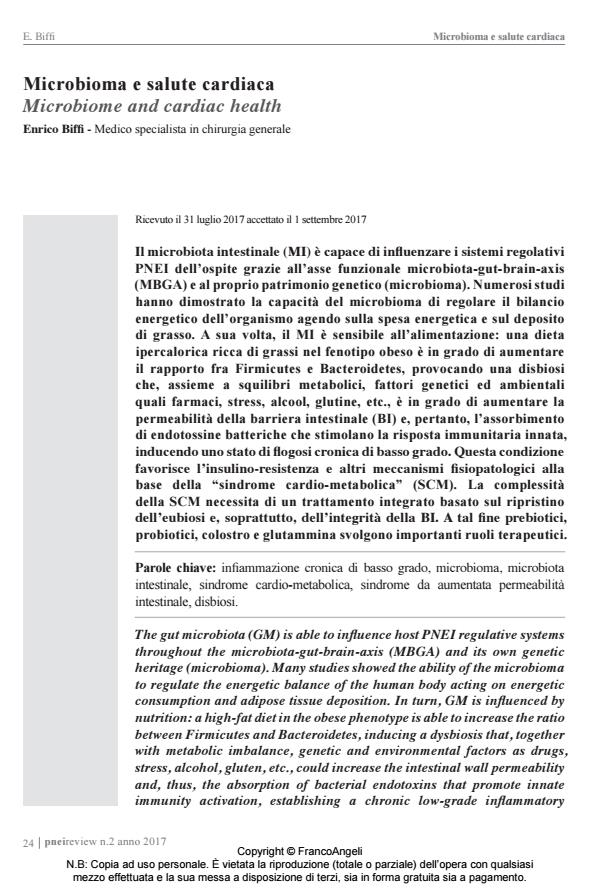Microbiome and cardiac health
Journal title PNEI REVIEW
Author/s Enrico Biffi
Publishing Year 2017 Issue 2017/2
Language Italian Pages 13 P. 24-36 File size 1231 KB
DOI 10.3280/PNEI2017-002003
DOI is like a bar code for intellectual property: to have more infomation
click here
Below, you can see the article first page
If you want to buy this article in PDF format, you can do it, following the instructions to buy download credits

FrancoAngeli is member of Publishers International Linking Association, Inc (PILA), a not-for-profit association which run the CrossRef service enabling links to and from online scholarly content.
The gut microbiota (GM) is able to influence host PNEI regulative systems throughout the microbiota-gut-brain-axis (MBGA) and its own genetic heritage (microbioma). Many studies showed the ability of the microbioma to regulate the energetic balance of the human body acting on energetic consumption and adipose tissue deposition. In turn, GM is influenced by nutrition: a high-fat diet in the obese phenotype is able to increase the ratio between Firmicutes and Bacteroidetes, inducing a dysbiosis that, together with metabolic imbalance, genetic and environmental factors as drugs, stress, alcohol, gluten, etc., could increase the intestinal wall permeability and, thus, the absorption of bacterial endotoxins that promote innate immunity activation, establishing a chronic low-grade inflamatory state. This condition augments insulin-resistance and other physiopathological mechanisms at the base of the cardio-metabolic syndrome (CMS). The complexity of the CMS needs an integrated treatment based on both restoration of eubiosis condition and intestinal barrier integrity. To achieve this end, prebiotics, probiotics, colostrum and glutamine carry out paramount therapeutic roles.
Keywords: Chronic low grade inflammation, microbiome, gut microbiota, cardiometabolic syndrome, leaky gut syndrome, dysbiosis
Enrico Biffi, Microbioma e salute cardiaca in "PNEI REVIEW" 2/2017, pp 24-36, DOI: 10.3280/PNEI2017-002003